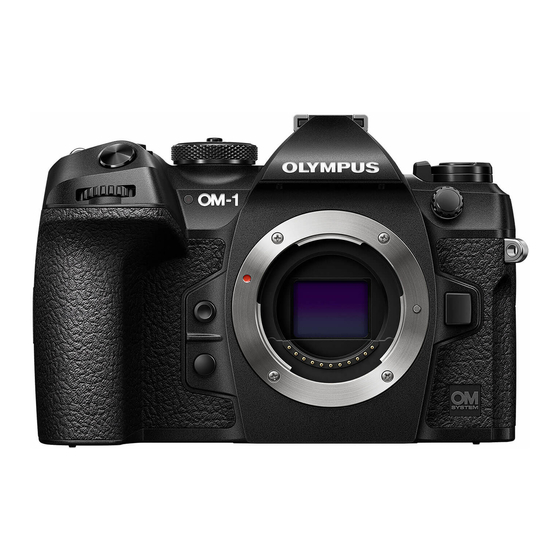
Table of Contents
Advertisement
Quick Links
DIGITAL CAMERA
Instruction Manual
Thank you for purchasing our digital camera. Before you start to use your new camera, please
read these instructions carefully to enjoy optimum performance and a longer service life.
Be sure you have read and understood the contents of "11. SAFETY PRECAUTIONS", before
using this product. Keep these instructions available for future reference.
We recommend that you take test shots to get accustomed to your camera before taking important
photographs.
The screen and camera illustrations shown in this manual were produced during the development
stages and may differ from the actual product.
If there are additions and/or modifications of functions due to firmware update for the camera, the
contents will differ. For the latest information, please visit our website.
Table of Contents
1.
Preparation
2.
Shooting
3.
Using the Menus
4.
Shooting Settings
5.
Playback
6.
Customizing the Camera
7.
Setting Up the Camera
Connecting the Camera to
8.
External Devices
9.
Cautions
10.
Information
11.
SAFETY PRECAUTIONS
Model No. : IM027
Advertisement
Table of Contents















Need help?
Do you have a question about the OM System OM-1 and is the answer not in the manual?
Questions and answers
I want to see the first picture when taking the second one in multiple exposure. But when I set the overlay to ON, it only calls up Raw files in my memory card but does not allow me to see the first picture when I take the second How can I set the Multiple Exposure in my OM-1 to see the first picture while taking the second
To view the first picture while taking the second using the Multiple Exposure feature on the Olympus OM System OM-1:
1. Set [Multiple Exposure] to [On] in the menu.
2. Set [Overlay] to [On] (this enables using an existing RAW image as an overlay).
3. Press the MENU button to exit the settings and return to the shooting screen. A "X" icon will appear.
4. Take the first picture. It will be shown superimposed in the viewfinder or screen as you compose the second shot.
5. Take the second picture. The "X" icon turns green while composing.
6. A multiple exposure image is created after the second shot.
You can press the D button to retake the first shot if needed.
This answer is automatically generated
AS far as i can tell my OM-1 is set to take RAW only, which is fine until I use focus stacking. How can i stop OM-1 taking jpegs in addition to RAW when using focus stacking. For each focus stack i expect the one final jpeg, but number of shots is doubled (because it records not just RAW but duplicate jpegs)